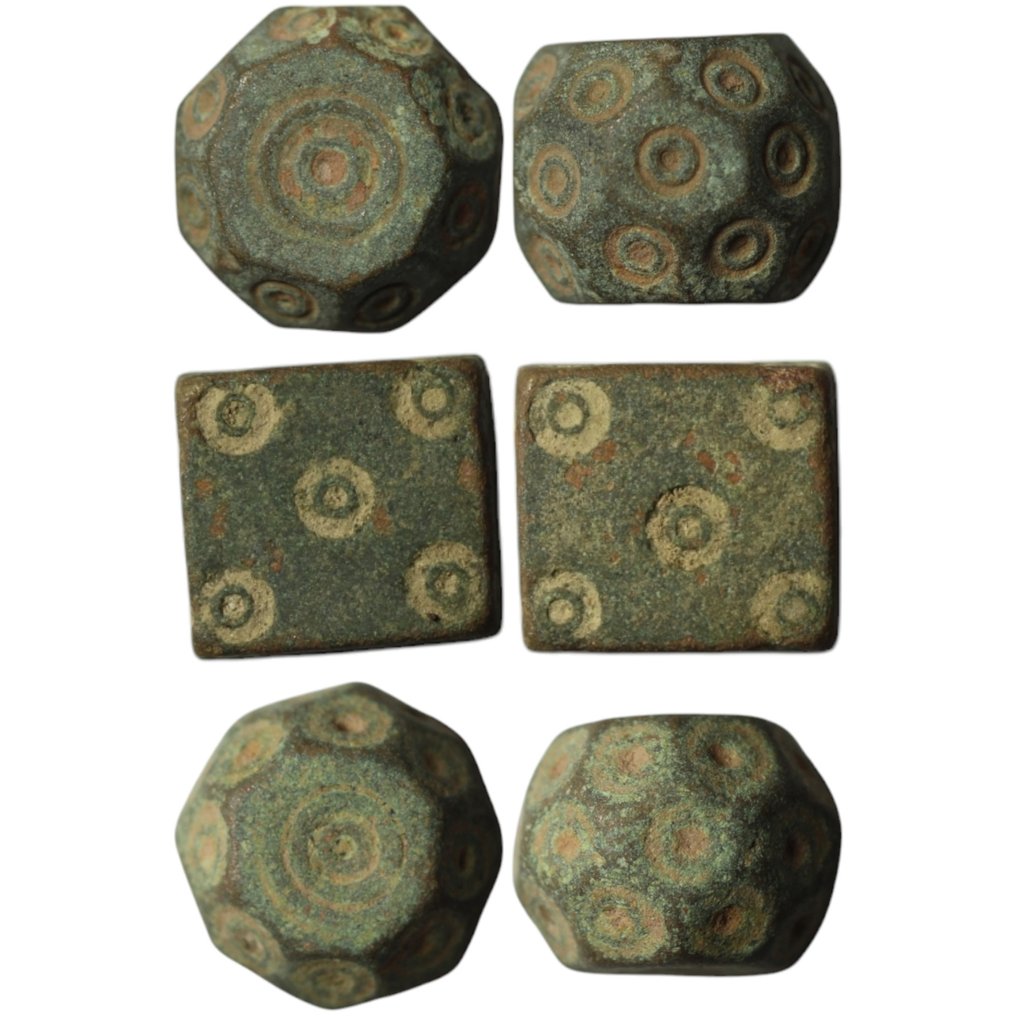Geachte Hr. Bobas, Hartelijk dank voor het bijzonder verzorgde pakket met toegekende Abbasiden Munt gedateerd: 775-785 AD. U een prettig weekend toewensend en vriendelijk groetend, P. E. Leever
Übersetzung ansehenIslamisches Reich (mittelalterlich). Lot of 3 Islamic Weight Standards for 10 & 5 Dirhams. (Ohne Mindestpreis)
Nr. 92687681


Early Islamic Bronze Weights. Circa 10-13th century BC.
Weight #1 (standard for 10 Dirhams, 19.0mm, 28.19g)
Weight #2 (standard for 5 Dirhams, 13.0mm, 14.44g)
Weight #3 (standard for 10 Dirhams, 20.0mm, 28.48g)
These weight standards, prevalent during the Islamic Golden Age (10th-13th century), played a significant role in trade and economic activities across the Islamic world. Dirham, a silver coin introduced by the Umayyad Caliphate in the 7th century, became a standard currency in vast regions, including the Middle East, North Africa, and parts of Asia. Weights were meticulously standardized to ensure fair trade, with specific weights for coins like the Dirham being established.
These weights were often used in daily transactions, trade, and commerce, especially in the burgeoning marketplaces and as part of the weight-based system for goods like spices, textiles, and metals. Islamic merchants, guided by the principles of fairness in trade, often employed weight standards based on the Dirham, ensuring a system of accountability and accuracy in financial dealings. Various regions in the Islamic world might have had slight regional variations, but the weight of 5 or 10 Dirhams was widely recognized as a consistent metric. This system laid the foundation for future monetary practices in the broader Mediterranean and beyond.
Early Islamic Bronze Weights. Circa 10-13th century BC.
Weight #1 (standard for 10 Dirhams, 19.0mm, 28.19g)
Weight #2 (standard for 5 Dirhams, 13.0mm, 14.44g)
Weight #3 (standard for 10 Dirhams, 20.0mm, 28.48g)
These weight standards, prevalent during the Islamic Golden Age (10th-13th century), played a significant role in trade and economic activities across the Islamic world. Dirham, a silver coin introduced by the Umayyad Caliphate in the 7th century, became a standard currency in vast regions, including the Middle East, North Africa, and parts of Asia. Weights were meticulously standardized to ensure fair trade, with specific weights for coins like the Dirham being established.
These weights were often used in daily transactions, trade, and commerce, especially in the burgeoning marketplaces and as part of the weight-based system for goods like spices, textiles, and metals. Islamic merchants, guided by the principles of fairness in trade, often employed weight standards based on the Dirham, ensuring a system of accountability and accuracy in financial dealings. Various regions in the Islamic world might have had slight regional variations, but the weight of 5 or 10 Dirhams was widely recognized as a consistent metric. This system laid the foundation for future monetary practices in the broader Mediterranean and beyond.
- 4
- 0
- 0
Parfait
Übersetzung ansehenEen heel prettige ervaring wat betreft de kwaliteit van de munten, en de zeer snelle levering. Kompliment!
Übersetzung ansehenHartelijk dank voor uw beoordeling. Veel plezier met uw aankoop!
- 4
- 0
- 0
Geachte Hr. Bobas, Hartelijk dank voor het bijzonder verzorgde pakket met toegekende Abbasiden Munt gedateerd: 775-785 AD. U een prettig weekend toewensend en vriendelijk groetend, P. E. Leever
Übersetzung ansehen